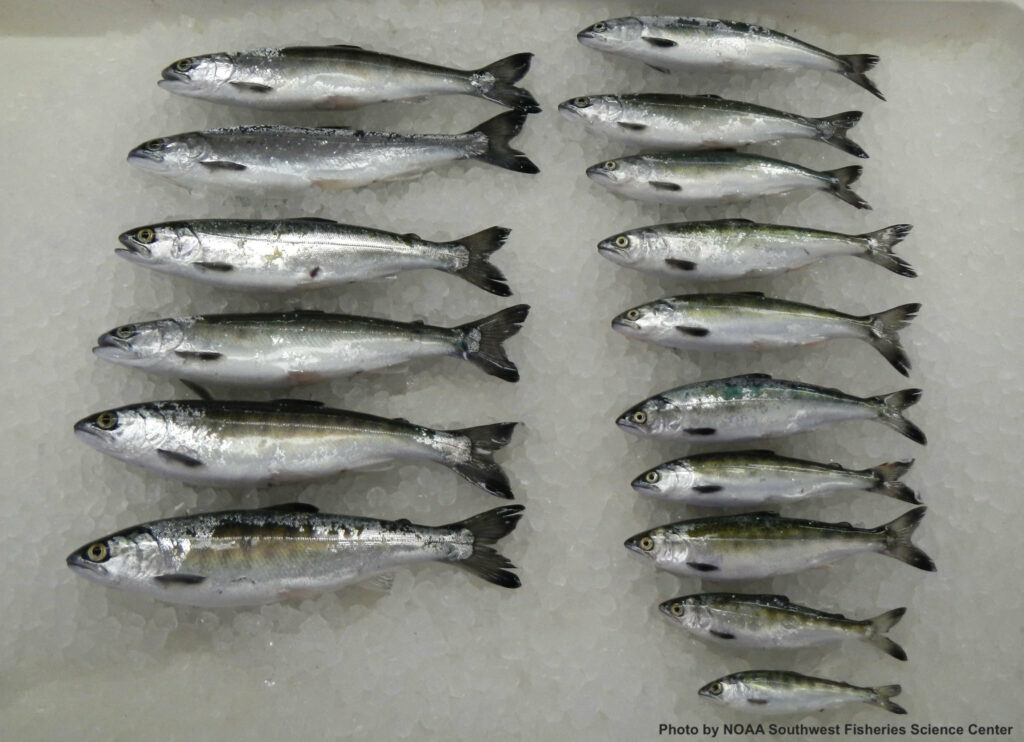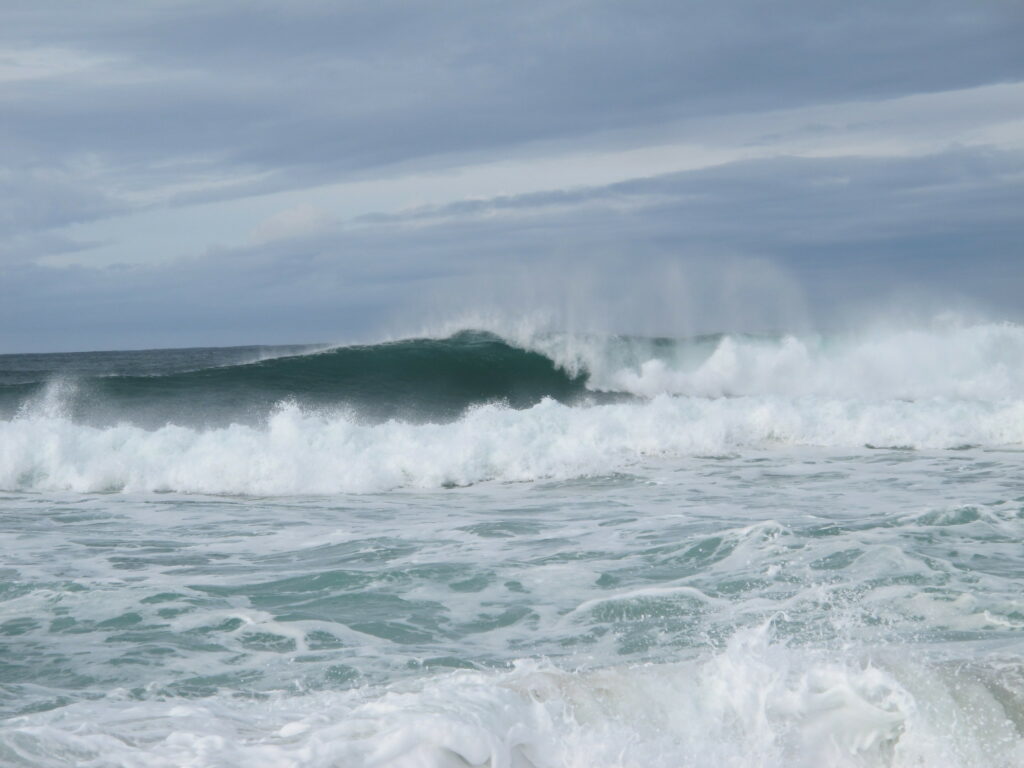Monday June 6, 2022

While much salmon research occurs when these fish are in rivers for spawning and rearing (and are easier to find), the majority of a salmon’s life is actually spent in the ocean. Conditions in the ocean are known to have profound effects on salmon populations, in particular by influencing the feeding and survival of smolts, the young migrating fish that make the transition from freshwater to saltwater. At the recent Salmon Restoration Conference in Santa Cruz, California, a session on the seascape ecology of California salmon featured several innovative studies seeking to shed light on the consequences of changing ocean conditions for salmon populations, including the influence of deep water upwelling and marine heatwaves on krill and other salmon prey, and how an anchovy-dominated diet is contributing to vitamin deficiencies in salmon. Since few options exist for improving conditions or habitats for salmon in the ocean, managers must respond to the impacts of ocean dynamics by focusing on the freshwater portions of the salmon life cycle, underscoring the particular challenges of managing an anadromous species.
The survival and success of salmon smolts in the ocean is highly tied to their ability to feed and grow. To do this, they need access to rich blooms of plankton, which in turn require the nutrients from ocean upwelling that power the marine food web. Nate Mantua of NOAA Fisheries, who co-organized the session along with Cynthia LeDoux-Bloom of Cal Poly Humboldt, highlighted the long-lasting repercussions that can happen when this tightly timed chain of events falls out of synch in noting that salmon stocks have still not fully recovered from the years of low marine survival in 2005 and 2006 (when upwelling was delayed) that led to the 2008 California salmon fishery collapse. Further highlighting the importance of ocean conditions on juvenile salmon survival, Mark Henderson of the USGS California Cooperative Fish and Wildlife Research Unit at Cal Poly Humboldt analyzed a 23-year dataset on reconstructed fall-run salmon cohorts and ocean conditions and found that 82% of juvenile survival estimates could be explained by upwelling, sea level anomalies, and onshore/offshore currents, which are factors that predict ocean productivity. For those interested in keeping tabs on ocean conditions, Mantua shared the new NOAA “stoplight” indicator website that provides a visual overview of ocean conditions over time. In contrast to several recent years of poor conditions, 2021 ocean conditions were largely “good” or “fair.”

To better understand juvenile salmon foraging in the ocean, Megan Sabal of Oregon State University investigated the influence of both broad and local-scale seascape features on salmon stomach fullness. She found that relative prey abundance was the most important contributor to stomach fullness at an annual scale. On a local scale, salmon had fuller stomachs after recent upwelling events and in locations close to thermal fronts, which are thought to concentrate prey. Salmon ate more krill after high recent upwelling, and switched to non-krill invertebrates after low recent upwelling. Focusing in on salmon prey, Eric Bjorkstedt of NOAA Fisheries presented results of long-term zooplankton sampling in northern California that reveal a shift in the plankton community as a result of climate influences. In warmer years, krill may be half as long, resulting in an 8-fold decrease in biomass available as salmon food. Krill also mature at smaller sizes and remain small in warmer years. During marine heatwaves, which have frequently been observed since 2014, a widespread transition in the plankton assemblage greatly reduces the prevalence of cool-water species that are important for salmon.
Multiple speakers discussed how a large-scale shift to an abundance of anchovy populations is impacting marine food webs. John Field of NOAA Fisheries shared that while rockfish dominated ocean salmon diets in the 1950s and 1980s, today their diets consist mostly of anchovies. Anchovies produce the enzyme thiaminase that breaks down thiamine (vitamin B1) in their predators. Rachel Johnson of NOAA Fisheries shared updates on efforts to understand and address recently observed thiamine deficiency in California salmon, which has been attributed to their anchovy-dominated diets, and has resulted in salmon egg mortality and birth defects. Analysis of thiamine concentration in salmon eggs led to estimates of 23% of winter-run egg mortality attributable to thiamine deficiency in 2020, and 44% egg mortality in 2021. Central Valley hatchery populations were hit harder by this novel stressor than coastal ones, and the more vulnerable stocks (winter, spring, and late-fall run Chinook) were the most affected. Potential treatments that can be effective are thiamine injections for female hatchery salmon, as well as thiamine baths for eggs and fry. Field noted that anchovies and other pelagic species have historically exhibited 60-year cycles, so we might expect several decades of anchovy abundance. These and other talks in the conference session reinforced how better understanding what happens to salmon in the ocean can help managers assess the actions at their disposal in freshwater environments to benefit these anadromous fish.
This post was featured in our weekly e-newsletter, the Fish Report. You can subscribe to the Fish Report here.
